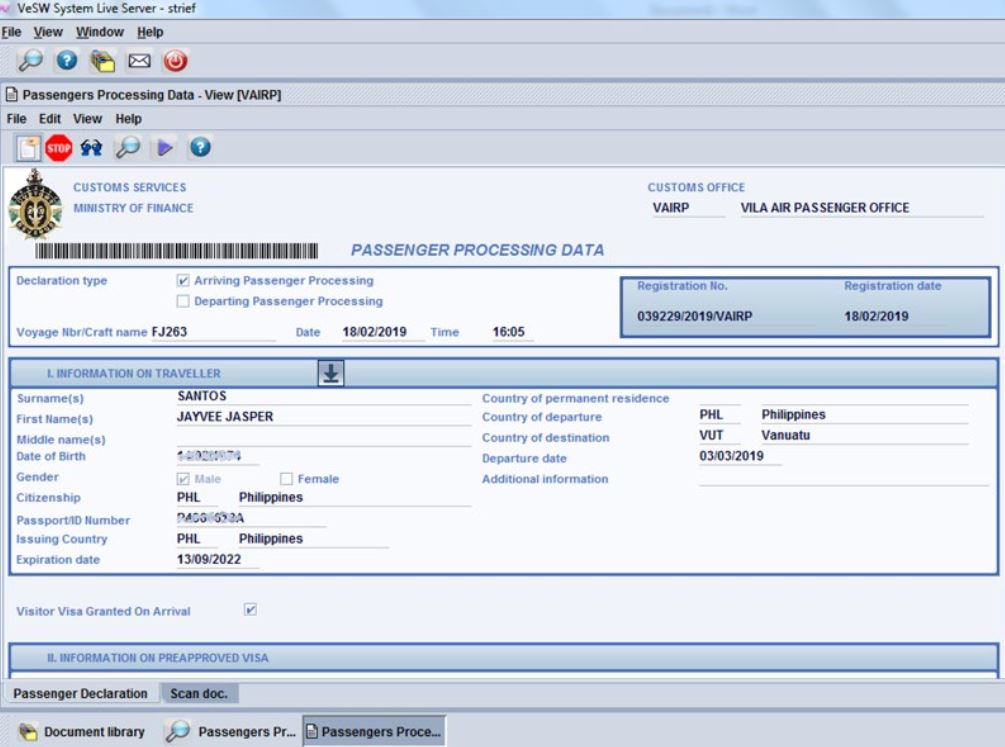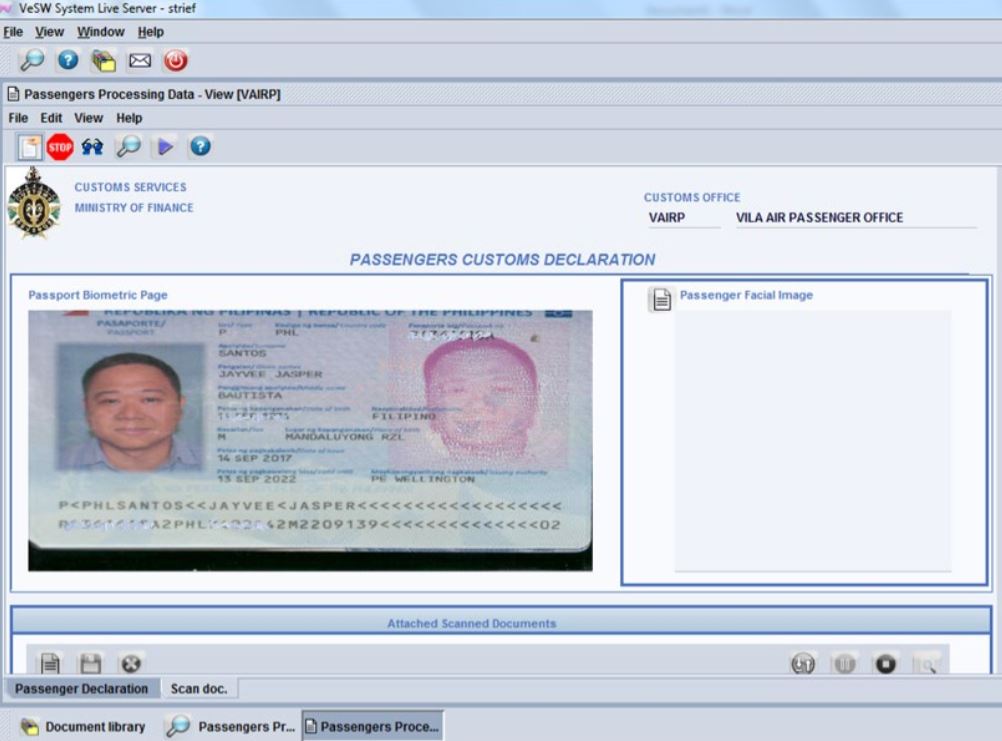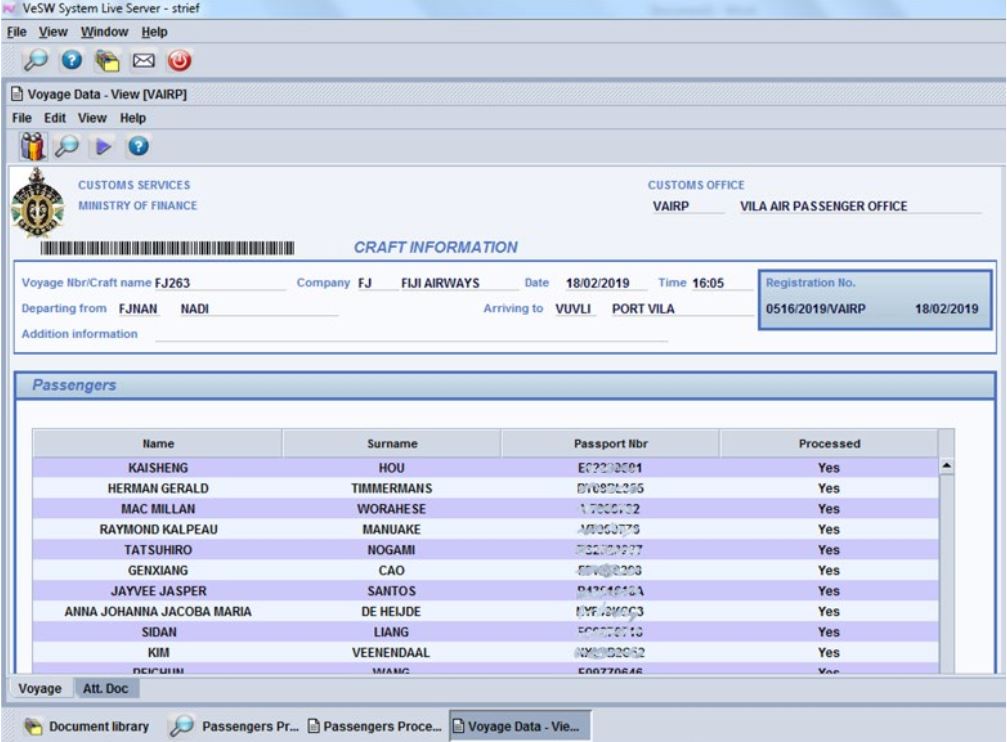Implementation of the ASYCUDA Passenger Processing Module in Vanuatu
The increasing number of visitors and travelers to Vanuatu has presented economic and development opportunities with increased revenue from tourism and stimulation of job creation. However, these opportunities come with inherent risks.
The Department of Customs and Inland Revenue (DCIR) recognizes that compromising between facilitation and security requires a risk-based and technology-driven approach, such as the ASYCUDA Passenger Processing Module (ASYPX), customized to the unique environment of Vanuatu. One of the main reasons to automate the processing of travelers is to be able to collect data electronically that will facilitate statistical analysis and risk management.
On 14 April 2019, 1’326 travelers arrived and departed through the international airports in Port Vila and Santo. It represents the highest number of air travelers processed in Vanuatu on a single day since the implementation of ASYPX.
Since the initial implementation at Bauerfield International Airport in Port Vila on 29 November 2018 (Picture 1), ASYPX has been rolled-out to all entry and exit points for air and maritime travel throughout the country.
On 1 December 2017, Vanuatu Customs officers assumed the primary line function of passenger processing at the airports and seaports.
Considering that DCIR has used ASYCUDAWorld since July 2017 and has seen the flexibility of its technology platform in extending existing features and creating new ones, DCIR sought UNCTAD’s assistance to develop an integrated module that gives a familiar look and feel as the other ASYCUDA modules; hence, reducing the learning curve for the front line officers.

ASYPX is a bespoke module that was designed and developed with input from the Australian Department of Home Affairs (Immigration) to mitigate the impact on DCIR of this new role of facilitating legitimate travelers and managing risks.
It features a main Passenger Processing form(Pictures 2 & 3) that automatically captures the traveler biodata from the machine-readable zone (MRZ) when the passport is scanned and minimizes data capture for the Customs officer.


Like other modern border management systems, ASYPX supports peripheral devices, such as passport scanners and webcams, to store scanned copies of the passport and arrival/departure cards and photos.
Depending on their nationality or purpose, some travelers require a valid visa to enter Vanuatu. The Vanuatu Immigration Service (VIS) processes these visa applications and uploads the granted visas in ASYPX prior to the arrival of the traveler. The approved visas are automatically matched when the passport is scanned (Picture 4) . VIS will embark on a computerization project to aid and automate their processes. In the meantime, VIS is now able to generate reports on the number and types of visas approved to specific persons or nationalities.

ASYPX features the Flight/Voyage Details form designed to accept Advance Passenger Information (API). DCIR and VIS continue to discuss with the airlines operating in Vanuatu to submit the API electronically. In the interim, a flight or a voyage is created in ASYPX for each arriving or departing aircraft or vessel, and traveler data are automatically added to the voyage each time a passenger is processed (Picture 5) . The form can also be extended to accept Passenger Name Record (PNR) when the electronic submission of API is implemented.

Another main reason for developing and implementing ASYPX is information sharing among the different border and law enforcement agencies. Indeed, from February 2019, the Vanuatu National Statistics Office, the Financial Intelligence Unit, the Police Force, and the Department of Tourism (Picture 6) have been trained and granted access to a number of reports in ASYPX that provide data on traveler arrivals and departures, historical flight information, and passenger movement history.

Discussions have been initiated to link ASYPX to the Interpol system used by the Police to target persons of interest to further enhance the security capability of primary line agencies. Profiles generated from the reports can then be fed in the Alert Data of ASYPX to target persons of interest when they are processed on arrival or at departure(Picture 7).

Mr. Jeffrey Markson, Vanuatu Immigration Director, stated during the 2019 Pacific Immigration Development Community (PIDC) Regular Annual Meeting held in Rarotonga, Cook Islands, that the ASYCUDA Passenger Processing Module (ASYPX) was a cost-effective solution tailored to meet the needs of both customs and immigration departments and allowed the compilation and analysis of traveler data in a timely manner.


